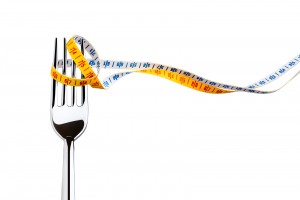 What is the Glycemic Index?
What is the Glycemic Index?
I keep getting a lot of questions about the glycemic index with regard to health issues such as diabetes as well as weight loss. While the information available about the glycemic index confusing, I’m going to share with you exactly what it is and how you can use the glycemic index to help improve your health and your fat loss.
What is the Glycemic Index?
(GI) is a measure of the rate at which the foods you eat raise your blood sugar levels. White bread is the standard to which all other foods are compared with an assigned a value of 100. The higher a food’s GI value, the faster it will raise your blood sugar. Foods with a high Glycemic Index also tend to cause more weight gain than foods with a lower Glycemic Index. A quick spike in blood sugar levels leads to a corresponding increase of insulin, your body’s primary storage hormone. The more insulin circulating through your bloodstream, the more calories will be stored as fat.
So what you should do?
Try to choose foods that rank low and medium on the Glycemic Index more often than those with a higher ranking.
-A rank of 55 or less is low.
-A rank of 55 to 69 is medium.
-A rank of 70 and up is high.
EXAMPLES OF LOW GI FOODS INCLUDE:

Oat Bran Bread, Pumpernickel Bread, Apples, Oranges, Asparagus, Kidney Beans, Lentils, Plain Yogurt, Skim Milk, Sweet Potatoes
EXAMPLES OF MEDIUM GI FOODS INCLUDE:

Bananas, Pineapples, Raisins, Popcorn, Basmati Rice, Brown Rice, Oatmeal, Couscous, Whole Wheat Bread,Rye Bread
EXAMPLES OF HIGH GI FOODS INCLUDE:

Dried Fruits, Rutabaga, Parsnip, Soda Crackers, Instant Rice, White Potatoes, French Fries, White Bagels, Kaiser Roll
Let me know if you found this article to be helpful. Your comments, questions and feedback is always welcome so feel free to leave a comment below 🙂












16 Responses on What is the Glycemic Index?

Terry Fouts says:
September 4, 2013 at 12:38 am

mary says:
September 4, 2013 at 1:19 am

Karine Losier says:
September 11, 2013 at 10:58 pm

Karine Losier says:
September 11, 2013 at 10:59 pm

rose says:
September 4, 2013 at 2:17 am

Karine Losier says:
September 11, 2013 at 11:01 pm

Peggy Dixon says:
September 4, 2013 at 5:46 am

Karine Losier says:
September 11, 2013 at 11:05 pm

Cathy says:
September 4, 2013 at 7:13 am

Karine Losier says:
September 11, 2013 at 11:06 pm

Lynnette says:
September 4, 2013 at 8:30 am

Karine Losier says:
September 11, 2013 at 11:08 pm

Nadia says:
September 4, 2013 at 12:56 pm

Karine Losier says:
September 11, 2013 at 11:08 pm

becks says:
September 4, 2013 at 5:06 pm

Rachel C says:
October 3, 2013 at 1:21 pm